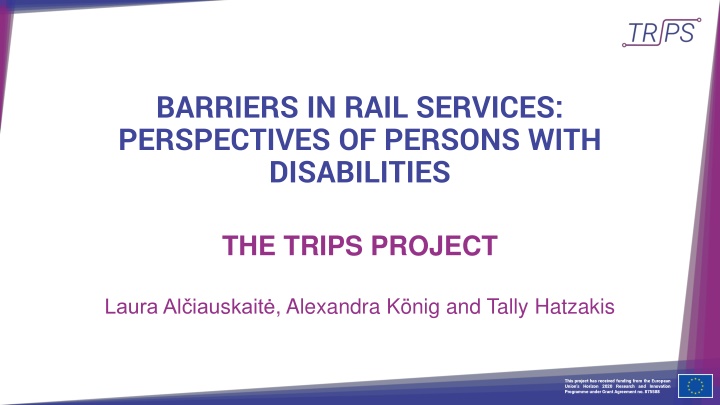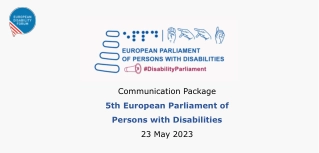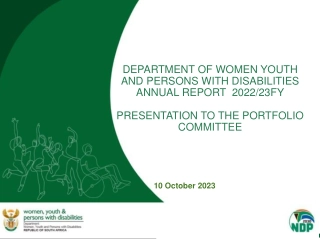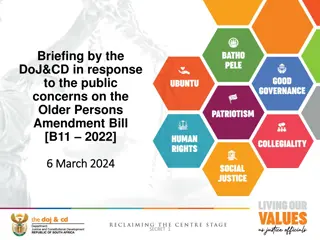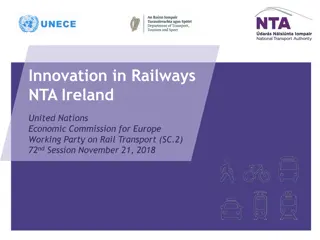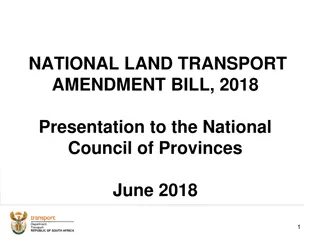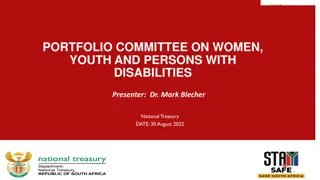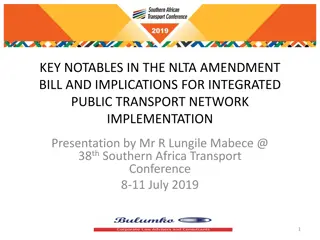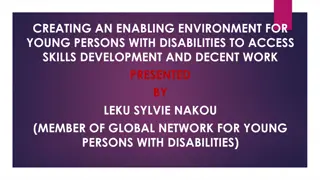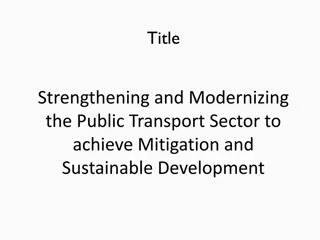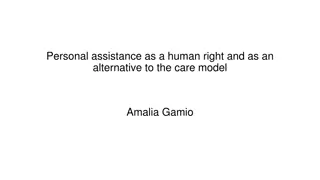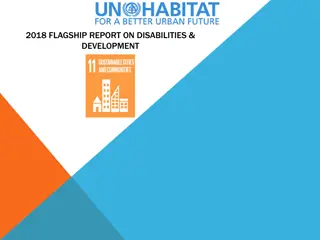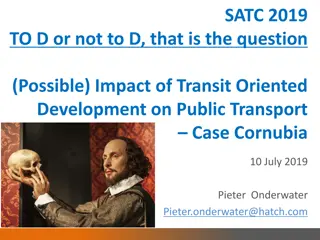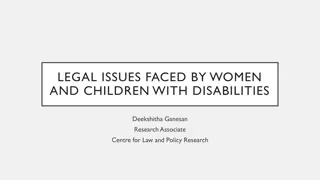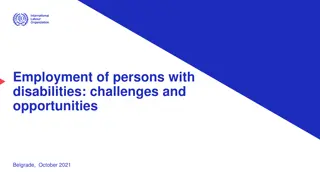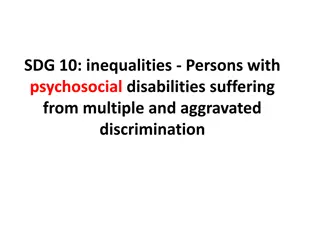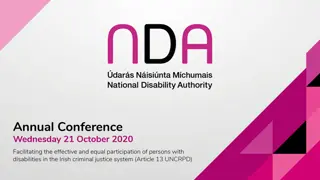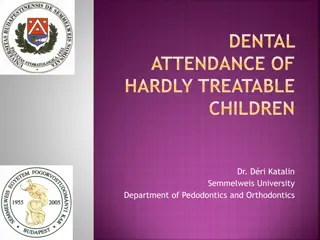Empowering Persons with Disabilities in Public Transport Innovation
This project, funded by the European Union's Horizon 2020 Research and Innovation Programme, aims to enhance accessibility in public transportation by involving users with disabilities in co-design processes. Through interviews and a user-centric approach, the TRIPS project seeks to revolutionize urban inclusive digital mobility solutions. Insights from individuals with disabilities highlight challenges and inspire innovative transport solutions to improve their overall experience.
Download Presentation

Please find below an Image/Link to download the presentation.
The content on the website is provided AS IS for your information and personal use only. It may not be sold, licensed, or shared on other websites without obtaining consent from the author.If you encounter any issues during the download, it is possible that the publisher has removed the file from their server.
You are allowed to download the files provided on this website for personal or commercial use, subject to the condition that they are used lawfully. All files are the property of their respective owners.
The content on the website is provided AS IS for your information and personal use only. It may not be sold, licensed, or shared on other websites without obtaining consent from the author.
E N D
Presentation Transcript
BARRIERS IN RAIL SERVICES: PERSPECTIVES OF PERSONS WITH DISABILITIES THE TRIPS PROJECT Laura Al iauskait , Alexandra K nig and Tally Hatzakis This project has received funding from the European Union s Horizon 2020 Research and Innovation Programme under Grant Agreement no.875588
TRIPS PROJECT: The aim is to make the public transportat more accessible by using a co-design approach and empowering the users with disabilities to play a central role in the innovation of transport solutions. In the end the urban inclusive digital mobility solutions will be designed by users with disabilities together with the support of methodology experts, assistive technology suppliers, transport operators and municipalities. This project has received funding from the European Union s Horizon 2020 Research and Innovation Programme under Grant Agreement no.875588
OUR PROJECT TAKES PLACE TRIPS stands for TRansport Innovation for vulnerable-to-exclusion People needs Satisfaction 11 partners and 7 European cities are engaged in the project The project is funded for the years (02/20 01/23) by the EU Stockholm Brussels Lisbon Bologna Cagliari Zagreb Sofia Picture: European map showing the seven cities This project has received funding from the European Union s Horizon 2020 Research and Innovation Programme under Grant Agreement no.875588
METHODOLOGY: THE INTERVIEWS They were conducted to acquire in-depth information and insights concerning the knowledge and opinions of the users with disabilities regarding public transportation in the cities. Interview guidelines were based on semi-structured questions. At least 7 people with different disabilities were interviewed in each of the project cities. Due to COVID-19 restrictions, interviews were conducted by phone or video call. This project has received funding from the European Union s Horizon 2020 Research and Innovation Programme under Grant Agreement no. 875588
RESULTS This project has received funding from the European Union s Horizon 2020 Research and Innovation Programme under Grant Agreement no. 875588
SOFIA I am talking about the subway. It's just impossible to take the tram from point A to point B. It's absurd, but I have to go back and cross the street /.../ Not every stop is accessible even on the same line. That`s why I have to cross the street again, go on the other side and then through the subway. (Interview from Sofia; wheelchair user) This project has received funding from the European Union s Horizon 2020 Research and Innovation Programme under Grant Agreement no. 875588
SOFIA: As I already said, I avoid using inter-city trams. Using them it's challenging if you have any type of disability. It's not only difficult, but it's dangerous to travel by train without personal assistant. (Interview from Sofia, visually impaired) This project has received funding from the European Union s Horizon 2020 Research and Innovation Programme under Grant Agreement no. 875588
ZAGREB: There are no elevators for the underpass. When I need to access a certain track, I have to call a service and they have to help me get there through 3-4 tracks. (Interview from Zagreb, wheelchair user) This project has received funding from the European Union s Horizon 2020 Research and Innovation Programme under Grant Agreement no. 875588
STOCKHOLM: Sometimes when they talk, in the loud speaker, don t understand it, quite complicated to know what s going on. /.../ Usually all the problem of the signals (in the metro) underground. Then in the metro at some station Because the information on the display is When we are waiting at the station, it s usually quite short and not so very complete so it makes it impossible to see from that what happened, and it s impossible to hear from the loud speaker. (Interview from Stockholm, hearing impaired) This project has received funding from the European Union s Horizon 2020 Research and Innovation Programme under Grant Agreement no. 875588
STOCKHOLM: Sometimes I feel like People so Look You know, the setting of the train is so Sometimes you have to sit next to somebody that you don t know. And it s so close to you. And I have to make sure to sit in the corner or You know. I don t really like people sitting in front of me or next to me, and there is no way to sit otherwise in the train. So, it makes very really uncomfortable to travel long distances like I do, because I have, like I live in the last station from the centre. (Interview from Stockholm, mental health issues) This project has received funding from the European Union s Horizon 2020 Research and Innovation Programme under Grant Agreement no. 875588
CAGLIARI: In trains, buses, and regional busses, there is absolutely no assistance. But in Cagliari there is a private service of the CTM, which allows you to book it a day earlier. (Interview from Cagliari, visual impairment) This project has received funding from the European Union s Horizon 2020 Research and Innovation Programme under Grant Agreement no. 875588
BOLOGNA: It is generally problematic for those who have sight problems, each station is built in its own way and is different from all the others. There seems to be no logic and I struggle to find the points to get on and off the train. (Interview from Bologna, visual impairment) This project has received funding from the European Union s Horizon 2020 Research and Innovation Programme under Grant Agreement no. 875588
BRUSSELS Something else that is very striking to me is that in stations like Brussel Noord, Brussel Centraal, which are pretty big stations, especially Brussel Zuid it is difficult to make contact with the workers, to register my arrival and request assistance. Different stations employ different procedures. In Brussel Noord I need to register at the ticket office, in Brussel Zuid I need to push a button, and in Brussel Centraal, I need to register on the platform. I truly believe this is not okay. They should employ a consistent procedure. Maybe a certain communication medium, such as a free smartphone application. (Brussels, wheelchair user) This project has received funding from the European Union s Horizon 2020 Research and Innovation Programme under Grant Agreement no. 875588
LISBON: The situation is the same when it comes to trains, there have been improvements. With the ramps I can actually get inside the train, if there is someone operating the ramps, that is. /.../There have been some improvements, but obviously there is room for more. (Interview from Lisbon, wheelchair user) This project has received funding from the European Union s Horizon 2020 Research and Innovation Programme under Grant Agreement no. 875588
LISBON: When it comes to other means of transport and services, the only one that I would need to book or cancel my booking is the train, the CP (Comboios de Portugal). But now you have to do everything 48 hours in advance. (Interview from Lisbon, wheelchair user) This project has received funding from the European Union s Horizon 2020 Research and Innovation Programme under Grant Agreement no. 875588
SUMMARIZING... There are still many unresolved issues when it comes to accessiblity when using rail services. Most of them are related to early pre-booking times, lack of assistance, inaccessible vehicles and whole infrastructure. The barriers are not only environmental but also social, e.g rude staff or unfriendly other passengers. Most of the investment was done in engineering solutions: ramps to enable people in wheelchairs to change level; audio information to support visually impaired people. Regarding the needs of people with mental health problems it is clear that much less has been done. This project has received funding from the European Union s Horizon 2020 Research and Innovation Programme under Grant Agreement no. 875588
Thank you for your attention! For more information please visit: https://trips- project.eu/ Any questions? Contact me: laura.alciauskaite@enil.eu This project has received funding from the European Union s Horizon 2020 Research and Innovation Programme under Grant Agreement no. 875588
